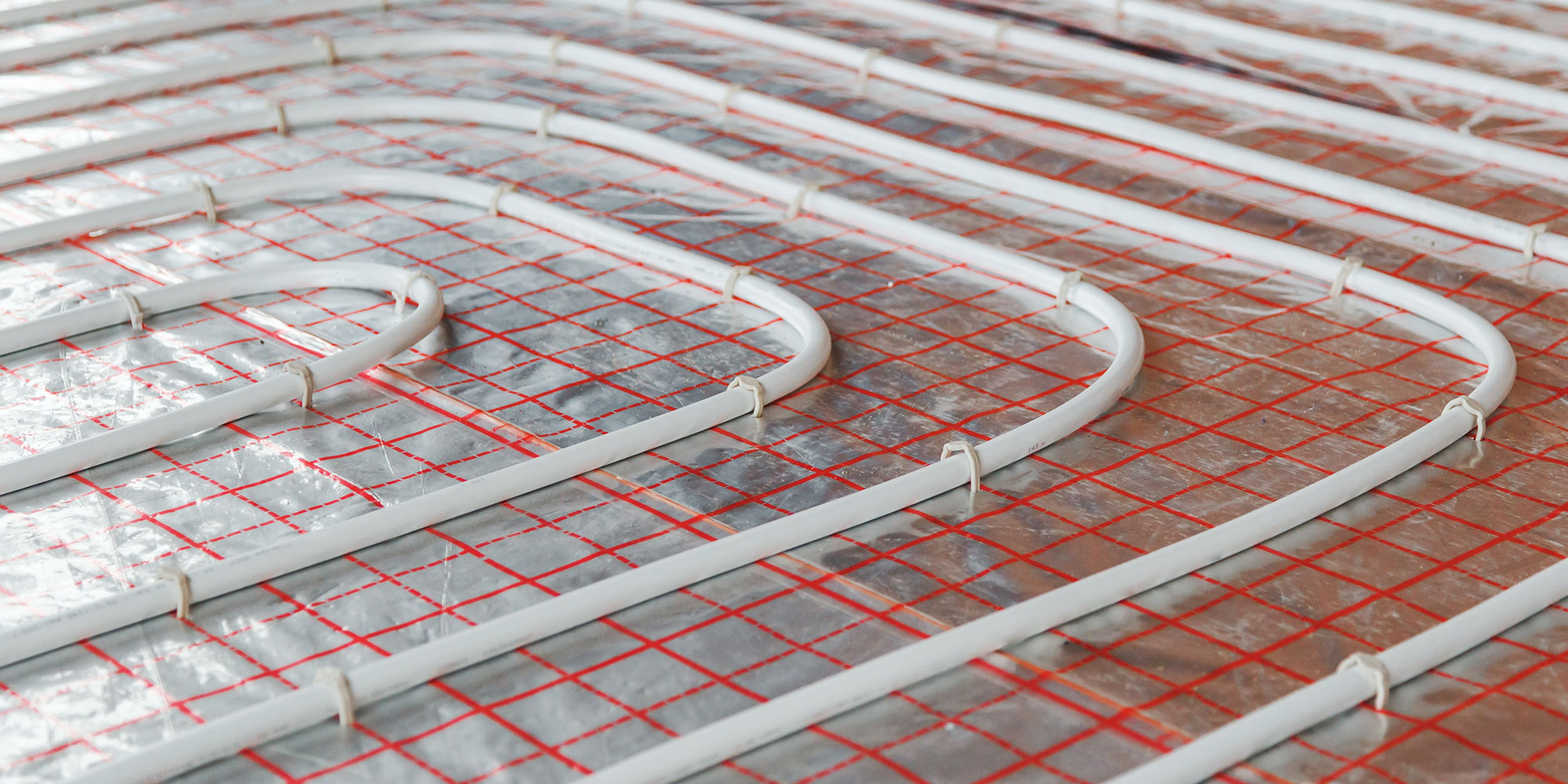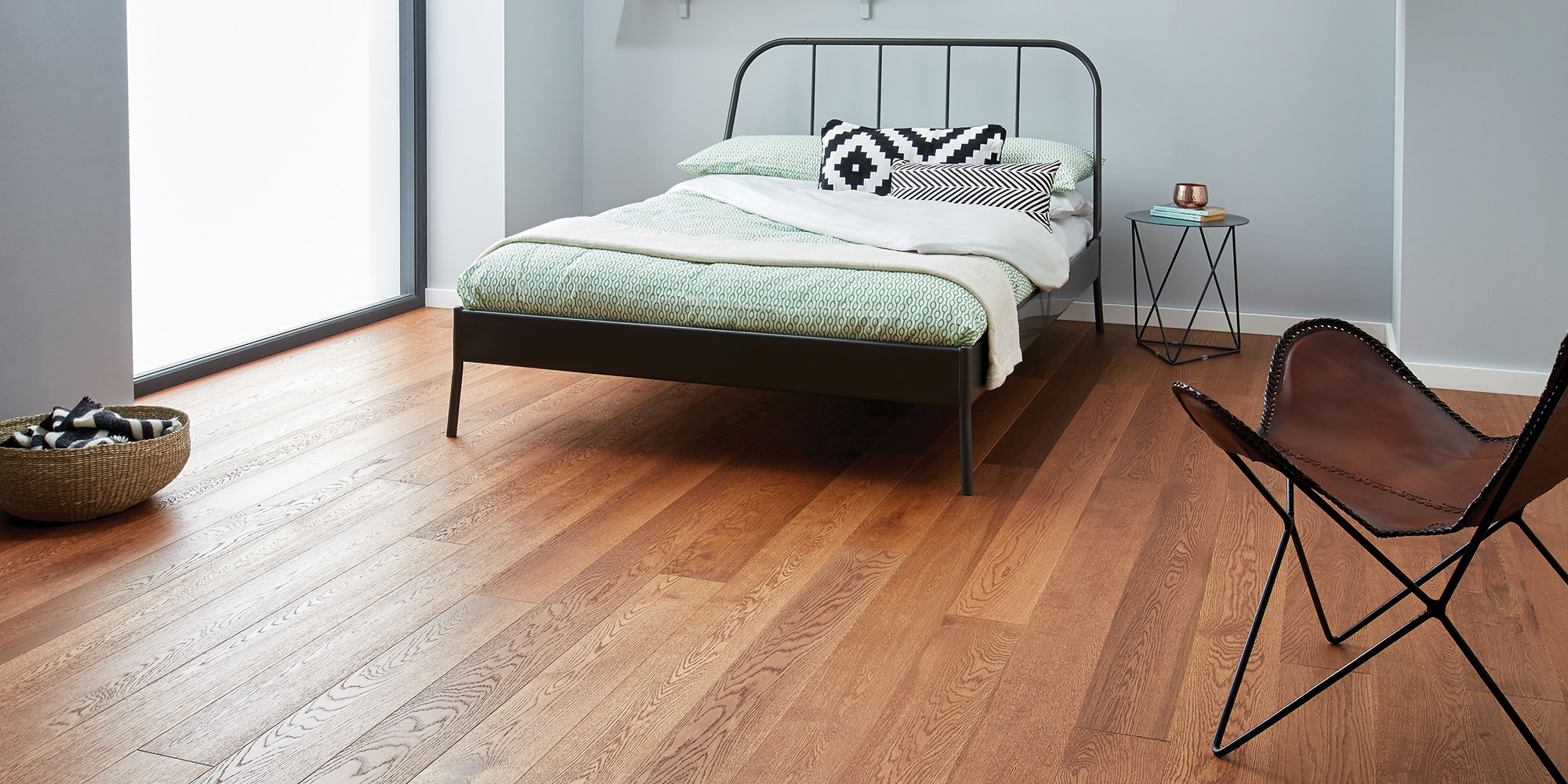Underfloor Heating and Wood Flooring

Underfloor heating helps to make a room feel warm and comfortable. But can you combine it with a cosy natural wood floor?
The simple answer is yes. However, we always recommend engineered wood flooring rather than solid wood.
Engineered wood has been designed to cope with the changing humidity of an underfloor heated environment. Its multi-layered construction limits natural movement in the wood that might otherwise be caused by changing temperatures, ensuring stability throughout your floor. Wood also has a great heat transfer and will create an even, comfortable warmth in your room.
Oak and Walnut engineered floors work well with underfloor heating, as well as our Brecon range too.
Tog Ratings
When choosing a wood floor to pair with underfloor heating, consider its tog rating. This is a measurement of the thermal resistance in the floor.
Anything under 1.5 will allow a great heat output. And the good news is all our engineered floors are rated between 1 and 1.2 meaning they’re well within the recommended range.
Taking Care
Fitting a floor with underfloor heating isn’t as simple as fitting one without and there are a few things to be aware of to ensure it all runs smoothly.
Before installation

Make sure your underfloor heating has been running for at least a fortnight before your floor is fitted, and has been checked for any leaks. Switch it off for at least 48 hours before installation.
Any wet trades such as plaster and paint should be dry and ensure the temperature in the room is at least 18 degrees on the day of fitting.
Another important part of the preparation is acclimatising your floor. Lay it flat in its boxes in the centre of the room for at least 3 to 4 days beforehand.
Your fitter can find more detailed guidelines for installing over underfloor heating in the Technical section of our catalogue.
After installation

Once your floor has been fitted, let it get used to its environment for another two to three days before the underfloor heating is switched on. Then raise the temperature gradually at no more than 1 degree per day until you reach your desired warmth. Just make sure the floor temperature doesn’t exceed 27 degrees celcius.
We recommend that you leave your heating on constant, adjusting gradually with the changing of the seasons. And if you do turn the system off completely then make sure you turn it back on using the same controlled method. Remember that changing the temperature too quickly could be damaging to your floor and may cause the wood to shrink, expand or even crack.
Another tip is to avoid using thick rugs in underfloor heated rooms as these can cause hot spots and raise the surface temperature to more than 27 degrees.
There you have it. All it takes is a little care and patience to enjoy a toasty room with wood flooring and underfloor heating. They do make a great pair after all.
These guidelines are here to help make sure you protect your natural floor but we strongly recommend consulting the instructions from your underfloor heating manufacturer too.

